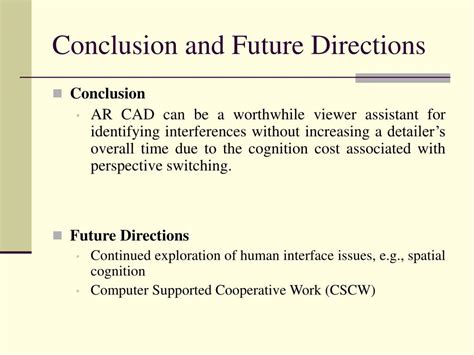Intro
Zofran, also known as ondansetron, is a medication primarily used to prevent nausea and vomiting caused by cancer chemotherapy, radiation therapy, and surgery. While it is highly effective in managing these conditions, many patients taking Zofran often report feeling sleepy or drowsy as a side effect. In this article, we will delve into the details of Zofran, its mechanism of action, and the reasons behind its sleep-inducing effects.
The importance of understanding the side effects of Zofran cannot be overstated, especially for patients who are already undergoing stressful and potentially debilitating treatments like chemotherapy or surgery. Knowing what to expect and how to manage these side effects can significantly improve the quality of life for these patients. Moreover, as healthcare continues to evolve, medications like Zofran play a crucial role in patient care, and their side effects are a critical area of study.
Zofran works by blocking the action of serotonin, a natural substance that may cause nausea and vomiting. While its primary use is in the management of nausea, its impact on the serotonin system can have broader effects on the body, including sleep patterns. Serotonin is not only involved in regulating nausea but also plays a significant role in mood regulation, appetite, and sleep. Therefore, altering serotonin levels in the body can have various effects beyond just preventing nausea.
How Zofran Affects Sleep

The relationship between Zofran and sleep is complex. While Zofran itself does not directly induce sleep, its effects on serotonin levels can influence sleep patterns. Serotonin is converted into melatonin in the brain, a hormone that regulates sleep-wake cycles. However, the impact of Zofran on serotonin and subsequently on melatonin production is not straightforward and can vary from person to person.
Mechanism of Action
Zofran's mechanism of action involves the selective inhibition of serotonin's action at the 5-HT3 receptor, which is located centrally in the chemoreceptor trigger zone of the area postrema and peripherally on the vagus nerve terminals. By blocking these receptors, Zofran prevents serotonin from triggering the vomiting reflex. However, serotonin's role in the body is multifaceted, and its blockade can have various side effects, including drowsiness.Side Effects of Zofran

The side effects of Zofran can vary widely among patients. Common side effects include headache, dizziness, constipation, and, notably, drowsiness. While not all patients experience these side effects, they are prevalent enough to be a consideration for patients and healthcare providers. The occurrence of drowsiness can be particularly significant for patients who need to maintain their daily activities and routines.
Managing Drowsiness
Managing drowsiness caused by Zofran involves a combination of lifestyle adjustments and, in some cases, medical interventions. Patients are often advised to avoid driving or operating heavy machinery if they feel drowsy. Additionally, taking Zofran at bedtime can help minimize the impact of drowsiness on daily activities. In cases where drowsiness significantly interferes with daily life, healthcare providers may consider adjusting the dosage or switching to a different medication.Benefits and Risks

The benefits of Zofran in preventing nausea and vomiting are well-documented and significant, especially for patients undergoing chemotherapy or radiation therapy. However, like all medications, Zofran comes with risks, including its side effects. Weighing the benefits against the risks is crucial for patients and healthcare providers. For many patients, the benefits of Zofran in managing nausea far outweigh the risks, but individual circumstances can vary.
Alternative Treatments
For patients who experience significant side effects from Zofran, including drowsiness, alternative treatments may be considered. Other medications that prevent nausea and vomiting are available, and healthcare providers can work with patients to find the most effective treatment with the fewest side effects. Additionally, non-pharmacological methods, such as acupuncture and dietary changes, may offer some relief from nausea.Conclusion and Future Directions

In conclusion, while Zofran is an effective medication for preventing nausea and vomiting, its potential to cause drowsiness is a significant consideration for patients. Understanding the mechanisms behind this side effect and how to manage it can improve patient outcomes. As research continues into the effects of Zofran and other antiemetic medications, future directions may include the development of medications with fewer side effects or more targeted therapies that minimize the impact on sleep and other bodily functions.
Final Thoughts
As we move forward in the management of nausea and vomiting, particularly in the context of cancer treatment and surgery, medications like Zofran will continue to play a vital role. By acknowledging and addressing their side effects, we can provide better care for patients and improve their quality of life during challenging times.Is Zofran safe for everyone?
+Zofran is generally safe but may not be suitable for everyone, especially those with certain medical conditions or taking specific medications. It's essential to consult with a healthcare provider before taking Zofran.
Can I drive after taking Zofran?
+If you experience drowsiness or dizziness after taking Zofran, it is not recommended to drive or operate heavy machinery. Wait until these side effects have resolved before engaging in such activities.
How long does it take for Zofran to start working?
+Zofran typically starts working within 30 minutes of administration, but its effectiveness can vary depending on the individual and the specific condition being treated.
We invite you to share your experiences or ask questions about Zofran and its effects on sleep in the comments below. Your insights can help others better understand and manage their medication side effects. Additionally, if you found this article informative, please consider sharing it with others who might benefit from this information. Together, we can work towards improving patient care and outcomes.
